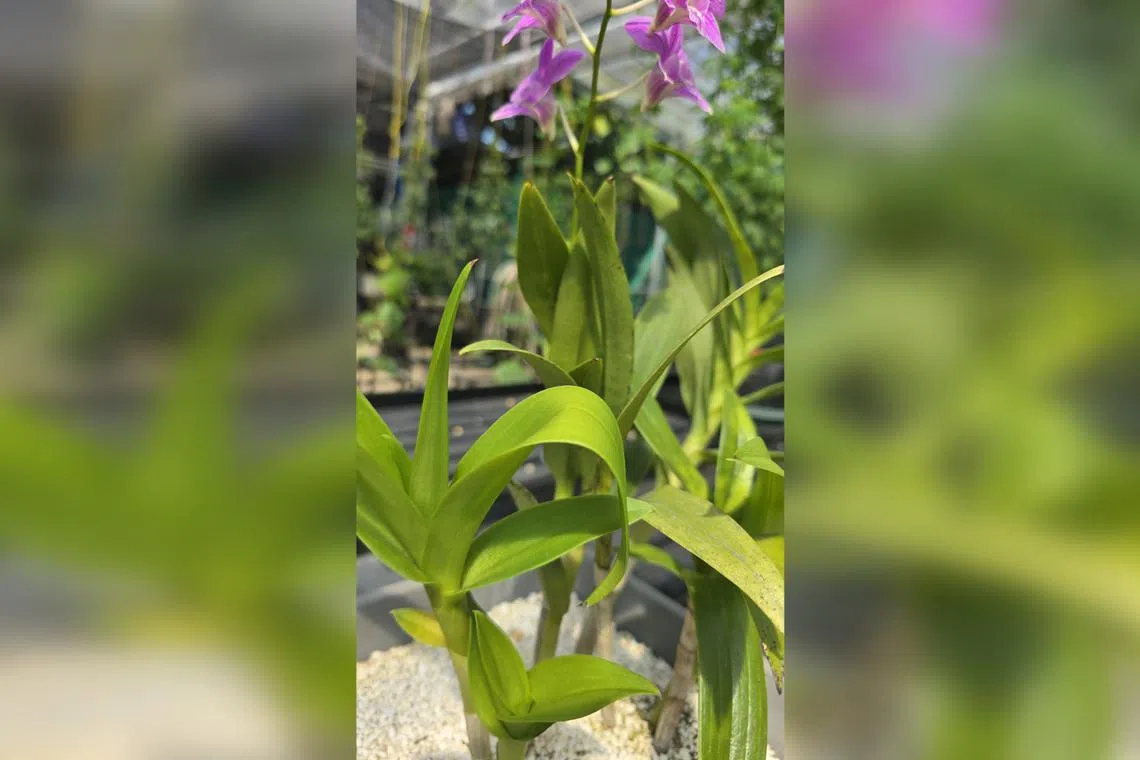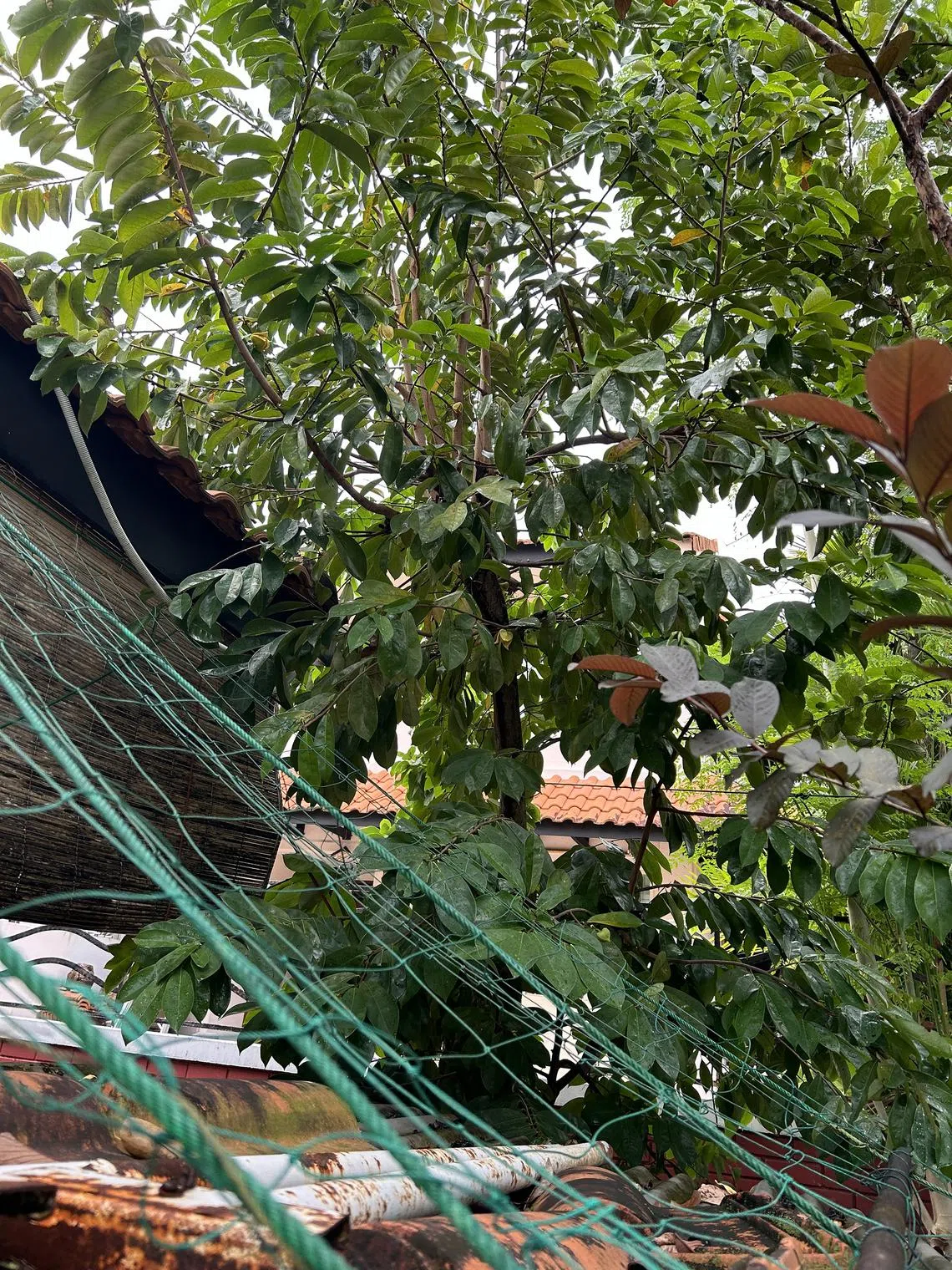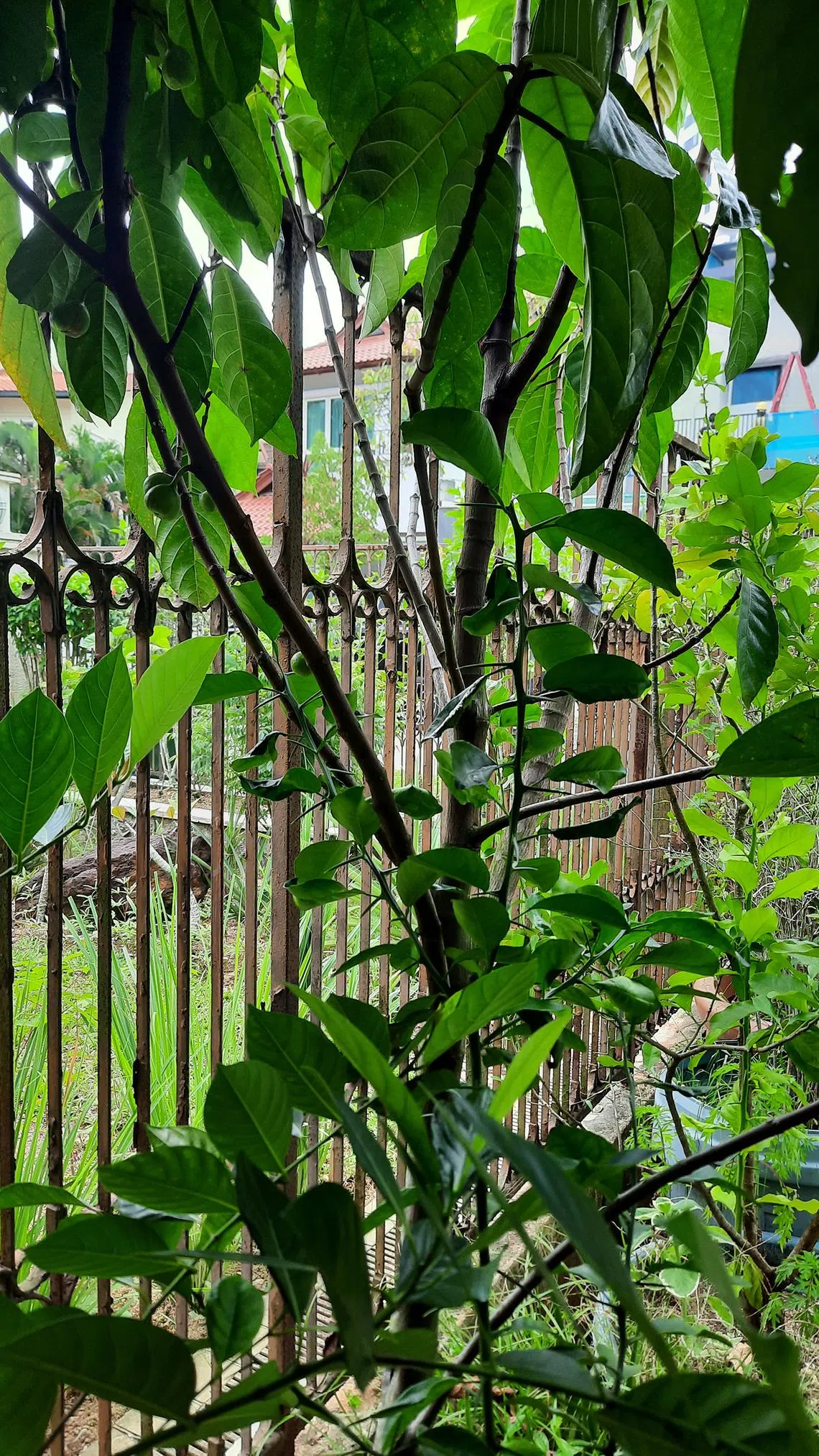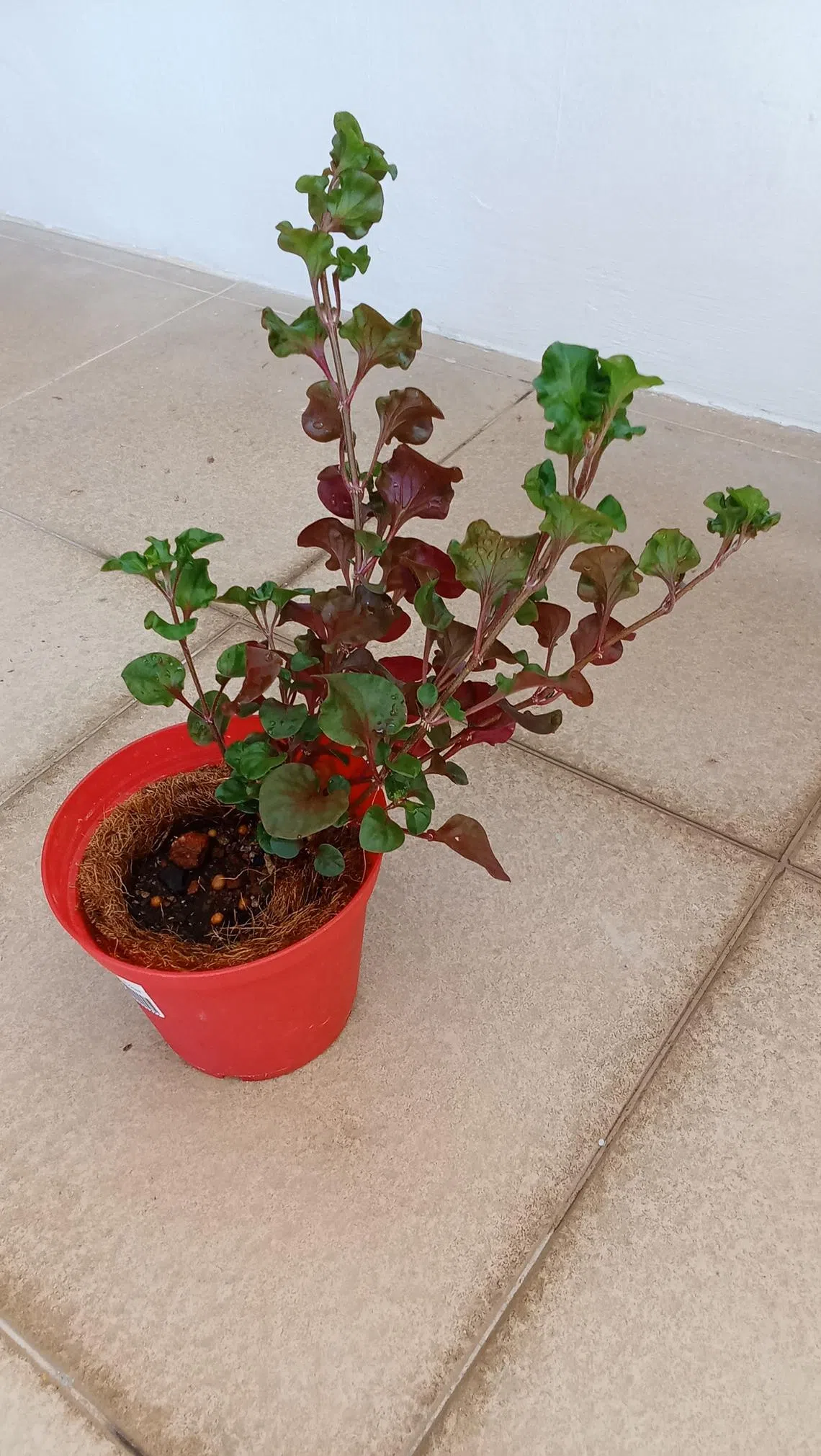Root Awakening: Dendrobium’s new leaves are soft and may curl
Sign up now: Get ST's newsletters delivered to your inbox

New leaves will grow stronger with time, provided the plant gets enough light.
PHOTO: ADRIAN LING
Wilson Wong
Follow topic:
Spots on leaves may be due to multiple causes
Some of my orchid’s leaves have curled. It is planted in a hydro system with perlite and is flowering as usual. There are also black spots. What is wrong?
Adrian Ling
It appears that the new leaves of your Dendrobium orchid are the ones that have curled. New leaves are usually soft and will toughen up with time, provided the plant is grown under higher light conditions.
Miniature Dendrobium orchids should be grown under filtered sunlight, although they can be adapted to grow under direct sunlight if watered regularly.
The black spots could be due to a bacterial infection rather than a fungal one. Fungicides will work best on fungal diseases. You will need to grow your plant under a protective cover to reduce the impact of heavy rain, which can injure the leaves and cause infection.
Also, ensure the plant has sufficient air circulation. The infected leaves may need to be removed.
Note that there are small yellow speckles on the leaves. Check for the presence of spider mites, which can cause similar-looking damage. Apply summer oil on a regular basis to manage any pest issues.
Hand pollination can help with fruit production of soursop

The male parts of the soursop mature faster than the female.
PHOTO: M. SWAMINATHAN
My soursop tree is flowering but not fruiting. I have tried to pollinate it myself, but the plant’s height makes this difficult. What else can I do to make the tree produce fruit?
M. Swaminathan
The inability of local soursop trees to produce fruit appears to be a common issue encountered by gardeners here.
The plant has a unique flowering phenomenon called protogyny, where the male parts mature faster and shed pollen before the female parts become receptive.
As you have mentioned, hand pollination can increase the chance of fruit production. Collect the pollen from the flower when it first opens in the morning and store it overnight in a refrigerator. The next day, after the stigma – a sticky site found in the centre of the same flower – becomes receptive, transfer the pollen by dabbing some of it on a cotton bud and brushing it against the stigma. If pollination is successful, fruit will be formed.
Tree is a Ficus species

Examine the plant’s fruit upon maturity to determine its identity.
PHOTO: GILLIAN ONG
This plant is growing in a pot in my garden. It has small fruit that resemble figs. What is it?
Gillian Ong
The plant is indeed a Ficus species, a type of fig. However, its exact identity cannot be easily discerned from the picture.
Two commonly encountered species that have similar features include the Common Yellow-Stemmed Fig (Ficus fistulosa) and Common Red-stemmed Fig (Ficus variegata).
The mature fruit of the Common Yellow-Stemmed Fig are yellow-orange in colour, while those of the Common Red-stemmed Fig are red.
Ficus species can grow very large, so consider whether it is appropriate for this plant to continue growing in its existing location. You may need to remove it if space is limited.
Alternanthera is a good groundcover plant

The leaves are edible and turn red when exposed to direct sunlight.
PHOTO: ANG GUAT HONG
What plant is this? Why are the leaves turning red? It gets sufficient sunlight daily.
Ang Guat Hong
The plant is a cultivar of Alternanthera. It is commonly called Thai Watercress, although it is not related to the common watercress that is eaten as a vegetable. The leaves can be eaten once they have been cooked thoroughly.
The leaves of this plant turn red when exposed to direct sunlight and green under shadier conditions. It is easily propagated via stem cuttings.
When planted densely in an outdoor garden bed, it can be a good groundcover plant.
Answers by Dr Wilson Wong, an NParks-certified practising horticulturist and parks manager. He is the founder of Green Culture Singapore and an adjunct assistant professor (Food Science & Technology) at the National University of Singapore.
Have a gardening query? E-mail it with clear, high-resolution pictures of at least 1MB, if any, and your full name to . We reserve the right to edit and reject questions.

